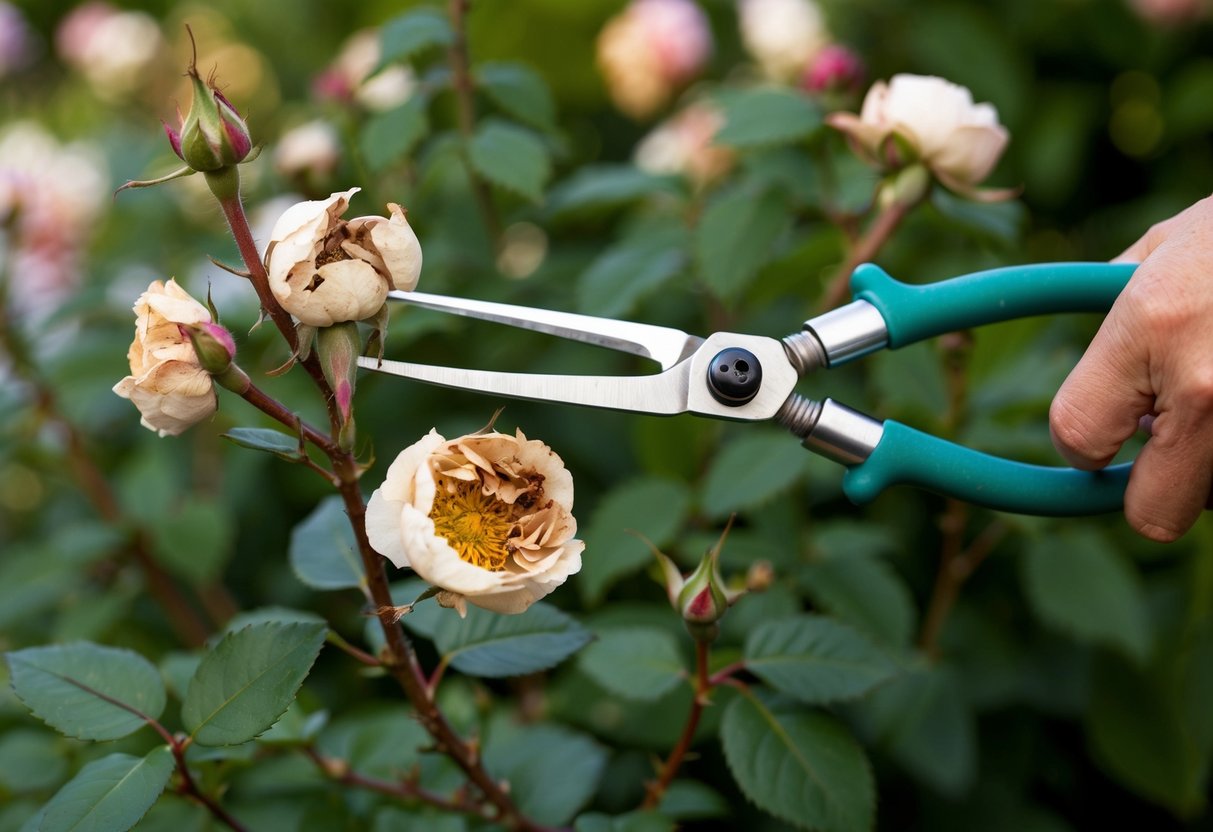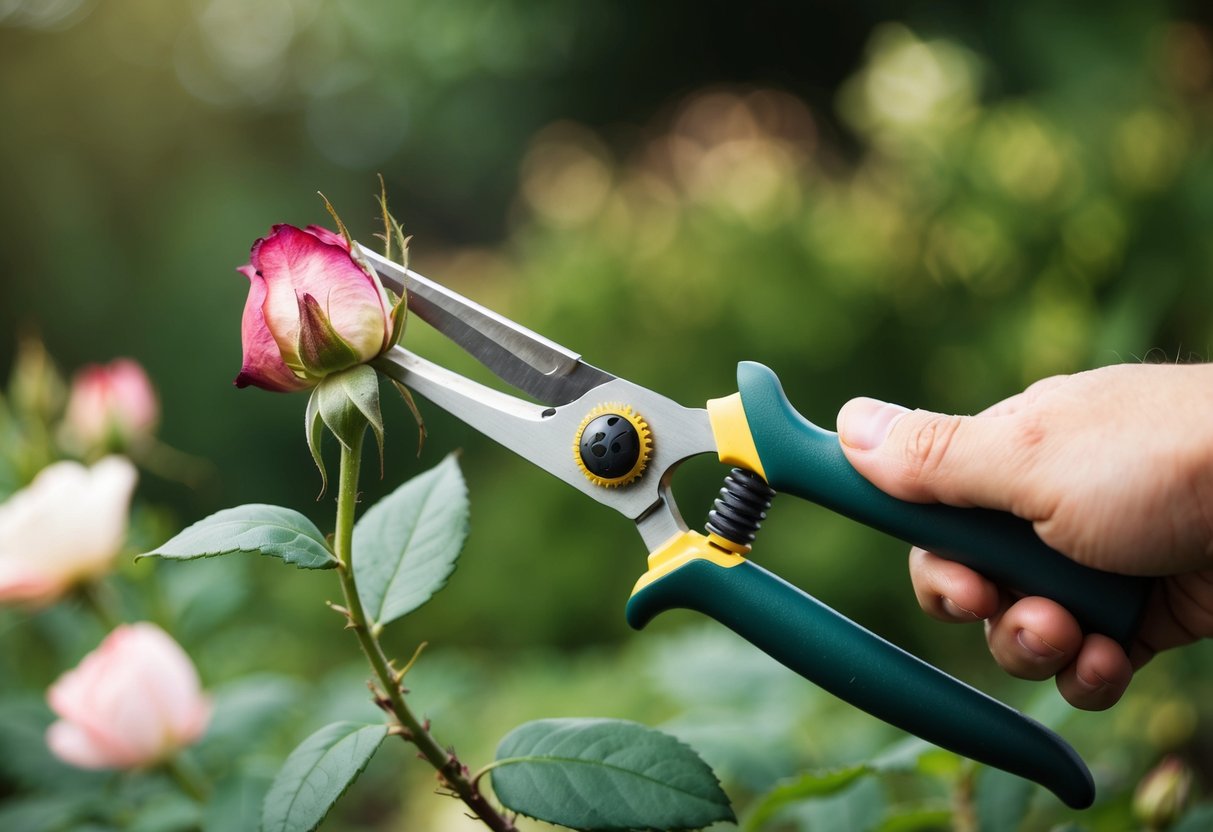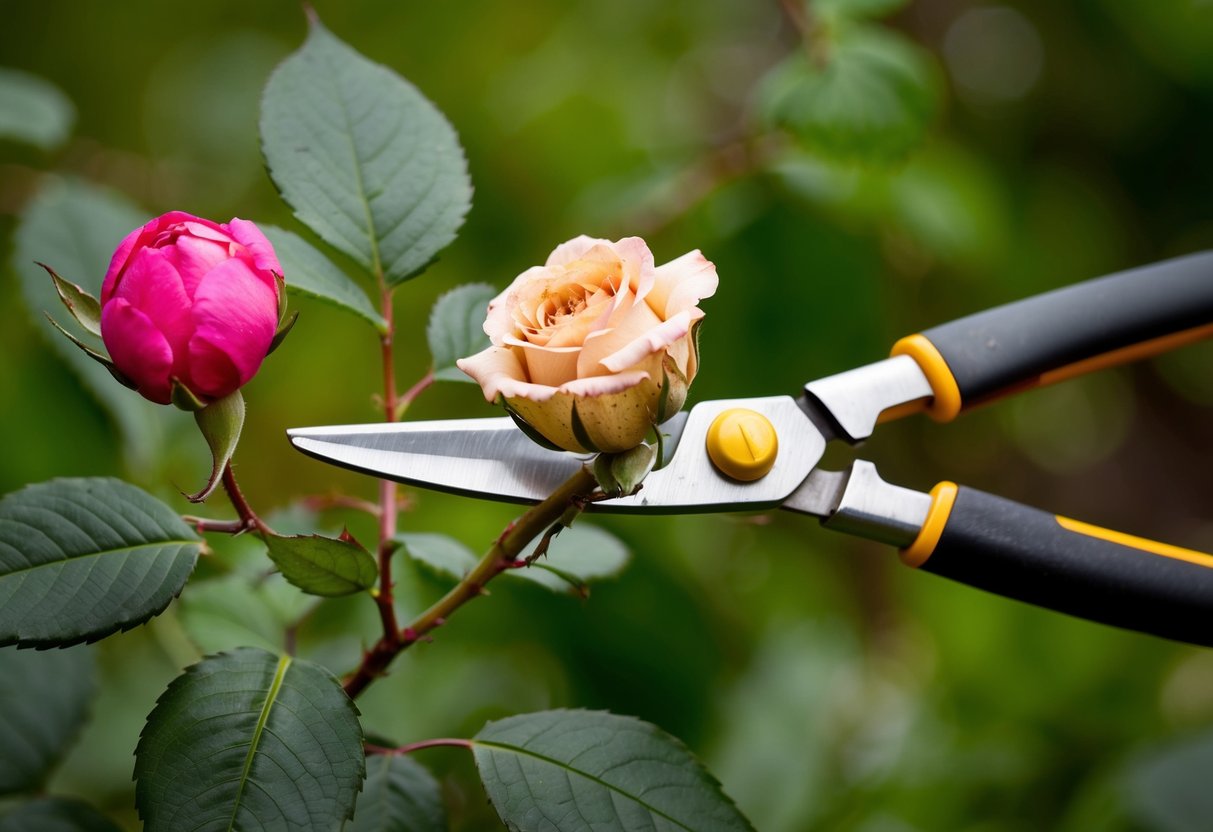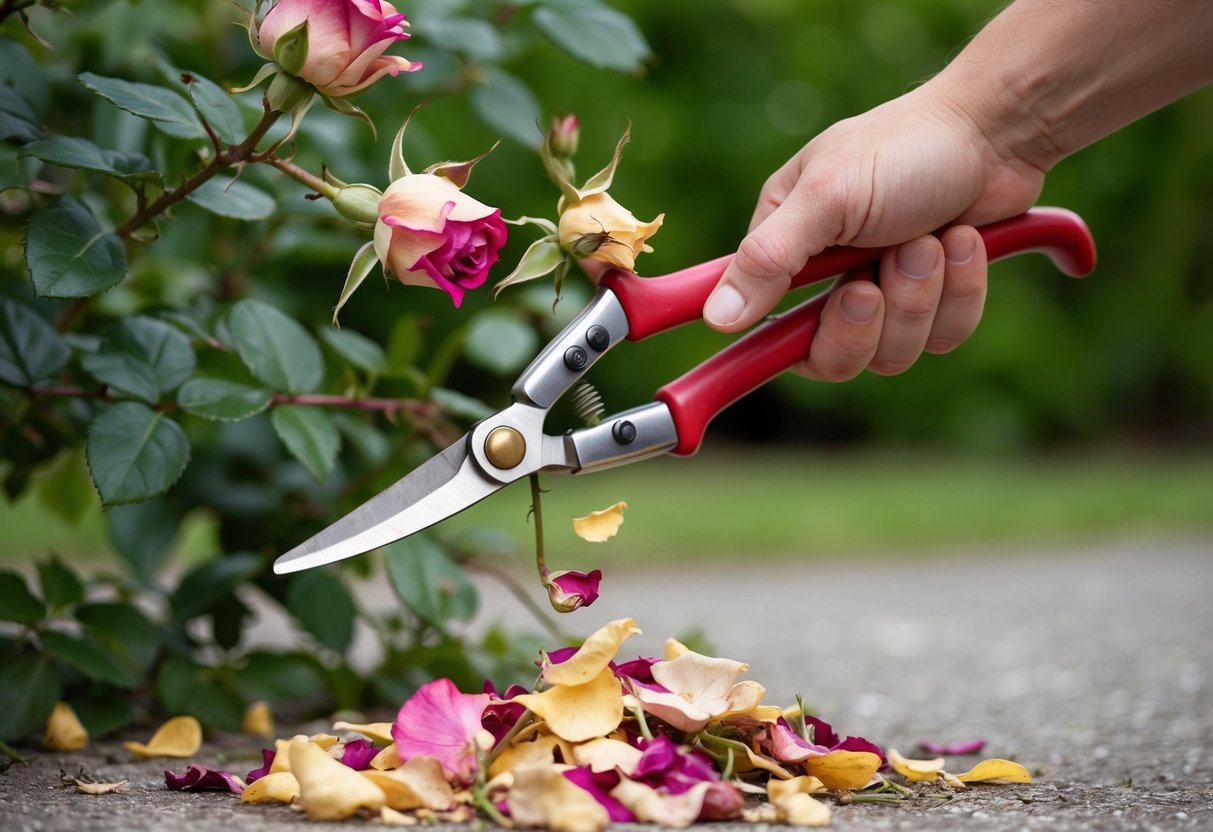Should You Cut Dead Rose Blooms Off? Tips for Thriving Roses
Roses are a favorite in many gardens, adding beauty and color to outdoor spaces. One question you might have is whether to cut off the dead blooms. Yes, cutting dead rose blooms, also known as deadheading, is beneficial. This process encourages the plant to focus on producing new blooms instead of spending energy on dying ones and developing seeds.

By regularly pruning and removing faded flowers, you not only keep your roses looking tidy but also help in promoting more blooms throughout the season. Deadheading also helps prevent potential diseases that can arise from old blooms decaying on the bush.
Remember, different types of roses may have specific care needs. It’s helpful to know the variety you’re growing to ensure the best approach. If you’re intrigued by this technique, dive into the full guide to find practical tips and methods to enhance your garden’s floral display.
The Basics of Deadheading Roses

Deadheading roses is an important task to keep your garden looking vibrant. By removing dead blooms, you can help your rose bush produce more flowers and stay healthy throughout the growing season.
Understanding Deadheading
Deadheading refers to the practice of cutting off spent rose blooms. This is usually done with sharp pruning shears to ensure a clean cut. To properly deadhead, cut the stem just above a set of healthy leaves, often around a five-leaflet point. The ideal cut is made at a 45-degree angle. This technique helps rain or watering to flow off the cut, reducing the risk of fungi and bacteria, helping your plant to stay healthy.
Inspect your rose bush regularly during the blooming season. Look for withered flowers to remove promptly as this encourages the plant to focus its energy on creating new blooms. Remember, deadheading isn’t just about appearance; it is a vital part of rose care that enhances growth and bloom production.
Benefits of Deadheading
Deadheading offers several benefits, especially for maintaining a beautiful and thriving rose bush. By removing the dead blooms, you prevent the plant from forming seeds. This encourages the rose bush to focus its energy on producing more flowers, rather than on seed development.
Deadheading also contributes to the plant’s health. It can improve air circulation through the plant, reducing disease risks. Keeping your rose bush free from dead or dying blooms not only makes your garden look tidier but also supports the overall health and vitality of your plants. Regularly practicing deadheading will give you a better bloom yield as the seasons progress.
When to Deadhead Roses

Deadheading roses helps improve their appearance and encourages new growth. It’s important to understand when this task should be done to maximize blooms throughout the growing season.
Timely Deadheading
Remove dead blooms soon after they start to fade. This is best done throughout the growing season, from late spring to early fall. Waiting too long can cause petals to drop and create a mess.
Deadhead regularly to direct energy towards new flowers instead of seed production. This keeps your roses blooming beautifully. By being consistent with timing, you help maintain the plant’s health and vigor.
Identifying Spent Blooms
Look for signs like withered petals and dry, darkened parts on blooms. These indicate that a rose has finished blooming. After identifying a faded flower, use pruning shears to make a clean cut.
For the best cut, find a point just above a set of healthy leaves. This can be a set of five leaflets or a similar point of new growth. Cutting above foliage helps direct nutrients to healthier parts of the plant. Remember to always use sharp tools to avoid damaging the stems.
By following these steps, you’ll ensure the roses stay beautiful and thriving.
How to Deadhead Roses Properly

Deadheading roses involves cutting off spent blooms to encourage more flowers to grow. To do this well, it’s important to use the right tools and follow the correct steps to ensure healthy and vibrant rose bushes.
Choosing the Right Tools
When deadheading roses, having the right tools is crucial. You should use a pair of sharp gardening shears or pruning shears. This ensures a clean cut, reducing the risk of harming the plant.
Wear comfortable gloves to protect your hands from thorns and sharp edges. Gloves are important for preventing injuries and keeping your hands clean. High-quality gloves can make the task more comfortable and efficient.
Efficient tools and proper safety gear make the process smoother and protect the plants from damage. By choosing the right tools, you’re setting yourself up for success in maintaining your roses’ beauty.
Step-by-Step Deadheading Process
To deadhead properly, first find a healthy set of leaves below the bloom you want to remove. Look for a five-leaflet set on the stem. This is called the bud eye, where new growth can occur.
Make a clean cut about ¼ inch above this leaf set, using your shears at a 45-degree angle. This angle helps water run off, reducing the risk of bacteria and fungi.
As you work, collect the discarded blooms in a container. Keeping the area tidy helps prevent diseases from developing in your garden. Remember to stop deadheading as you approach the end of the growing season to allow your roses to prepare for dormancy.
Caring for Your Rose Bush Post-Deadheading

After deadheading your rose bush, it’s important to focus on protecting it from diseases and encouraging healthy growth. You’ll want to clean up any debris around the plant and watch for signs of pests, ensuring your rose remains vibrant and blooming.
Protection Against Diseases
To keep your roses healthy, start by removing any fallen leaves and rose petals from around the base. Leaving them there can attract pests and diseases, which may harm your plants.
Spraying with a mild, organic fungicide can help fend off fungal diseases. This is particularly important for varieties like the knock out rose which are generally resistant but can still fall prey to mold in humid conditions.
It’s also wise to check the undersides of leaves frequently for signs of insects. If you spot any caterpillars or aphids, consider using insecticidal soap to keep them at bay. Regular monitoring will keep your blooms safe and your plants strong.
Promoting Healthy Growth
Once you’ve cleared away dead blooms, encourage new growth by focusing on feeding and watering. Use a balanced fertilizer to give your rose bush the nutrients needed for robust flowering.
Cutting stems above a set of healthy leaves will direct energy to new shoots. This technique is especially useful for taller varieties like the climbing rose, which require stronger canes.
Water deeply at the base of the plant, taking care not to wet the foliage. This reduces the risk of diseases taking hold. By giving your rose the right environment, you’ll enjoy beautiful, continuous blooms throughout the season.
Understanding Pruning vs. Deadheading

Pruning and deadheading are important practices to keep your rose bushes healthy and blooming profusely. While both methods involve cutting, they serve different purposes and are done at different times.
Pruning Basics
Pruning is essential for keeping rose bushes strong and ensuring they flower well. It’s done to remove old or damaged branches and to shape the plant. This is usually done during the winter months when the plant is dormant.
Pruning roses involves cutting away dead wood and crossing branches. This process improves air circulation, reducing the risk of diseases. Use sharp shears, and it’s smart to clean them with a disinfectant to prevent spreading any diseases. This helps roses focus energy on producing vigorous canes and larger blooms.
When to Prune
Knowing when to prune is just as crucial as knowing how. Most gardeners prune roses in late winter or early spring, right before new growth begins. Timing can vary depending on your climate; however, the general rule is to prune after the last frost.
While pruning, keep an eye out for rose hips, which you might want to leave on the plant as they can be an attractive feature and offer winter interest. Remove any spent flowers during the growing season to boost further blooming. These techniques work best when carried out consistently throughout the year.







